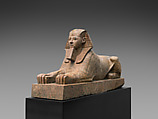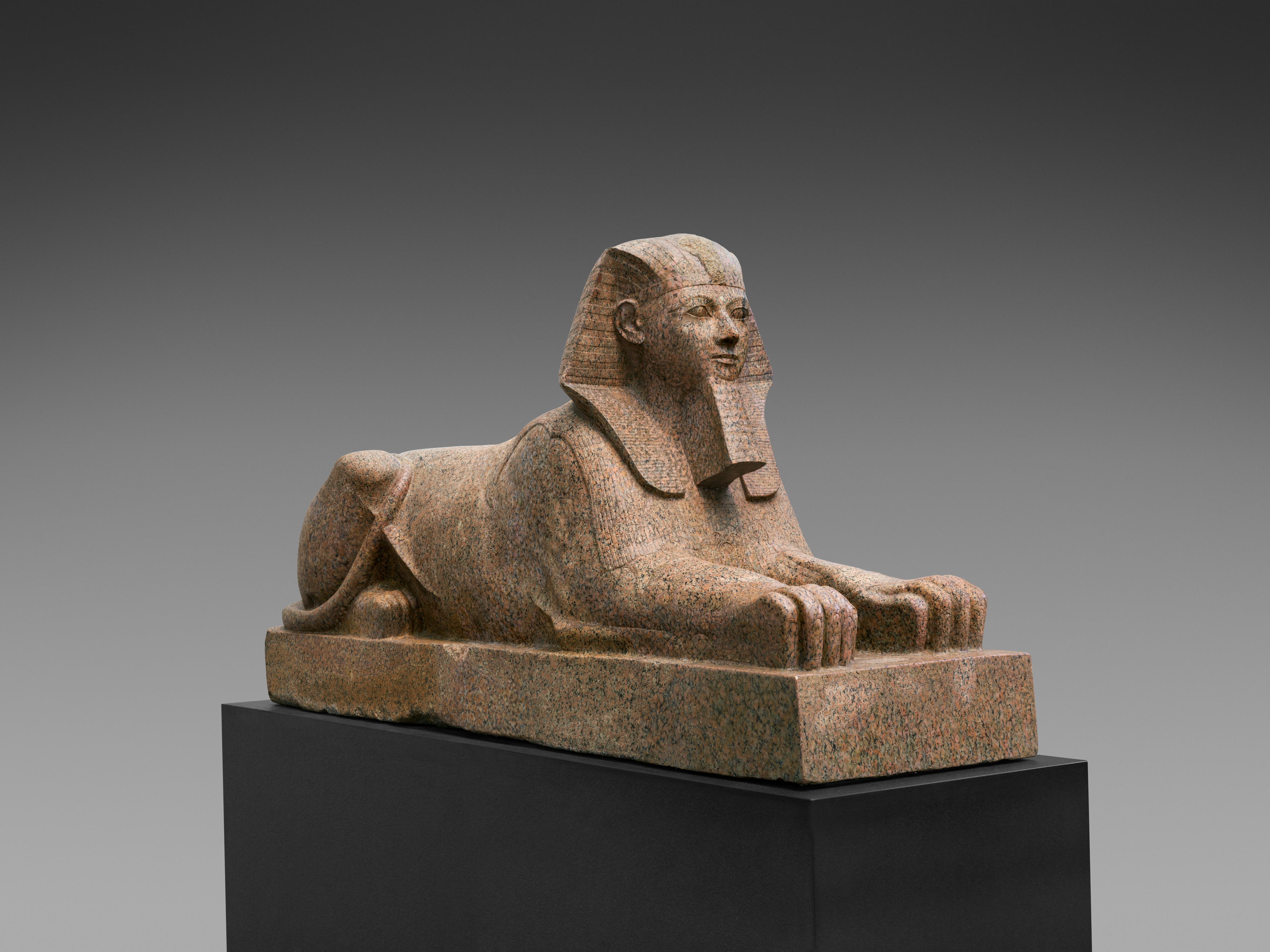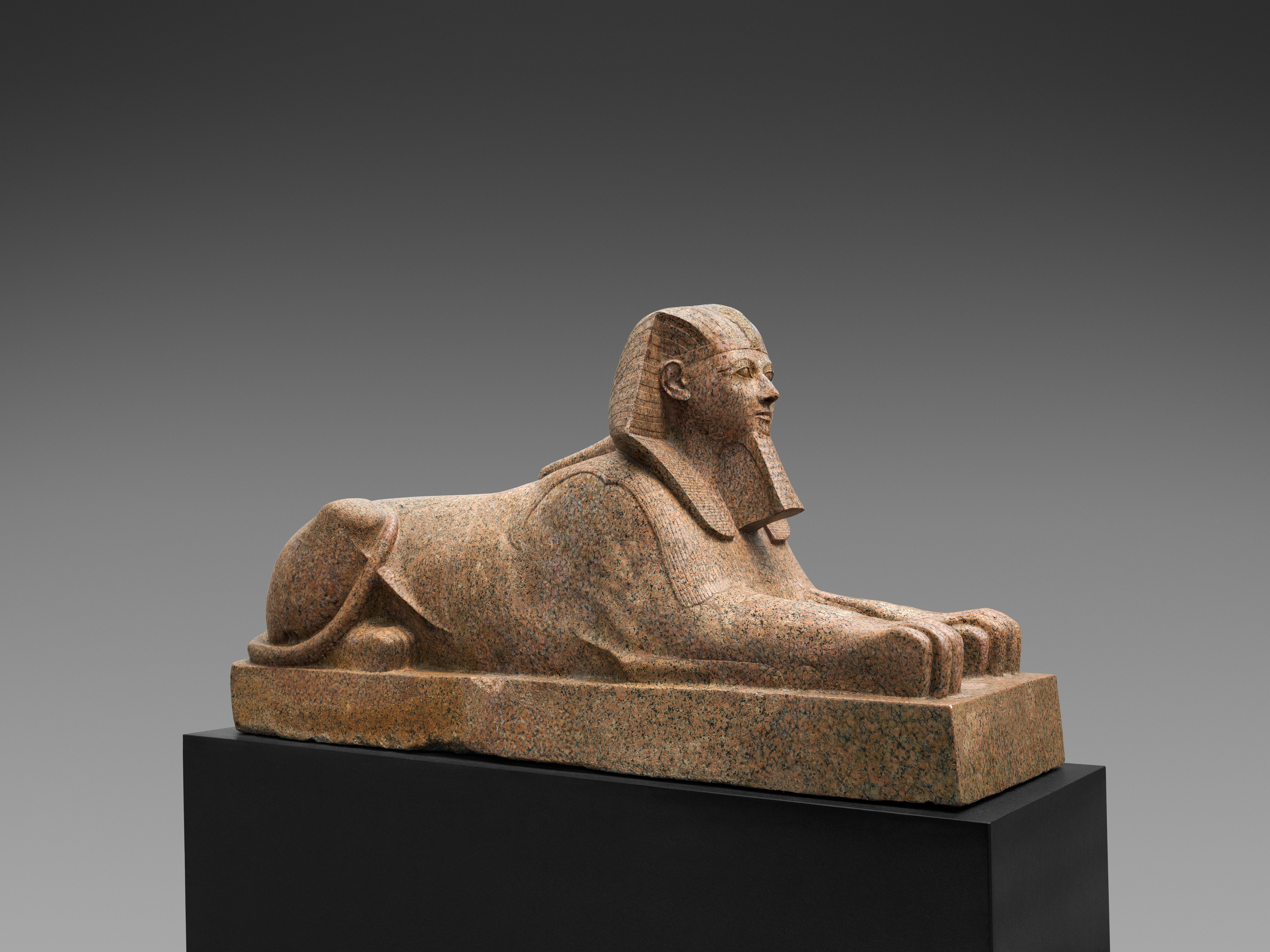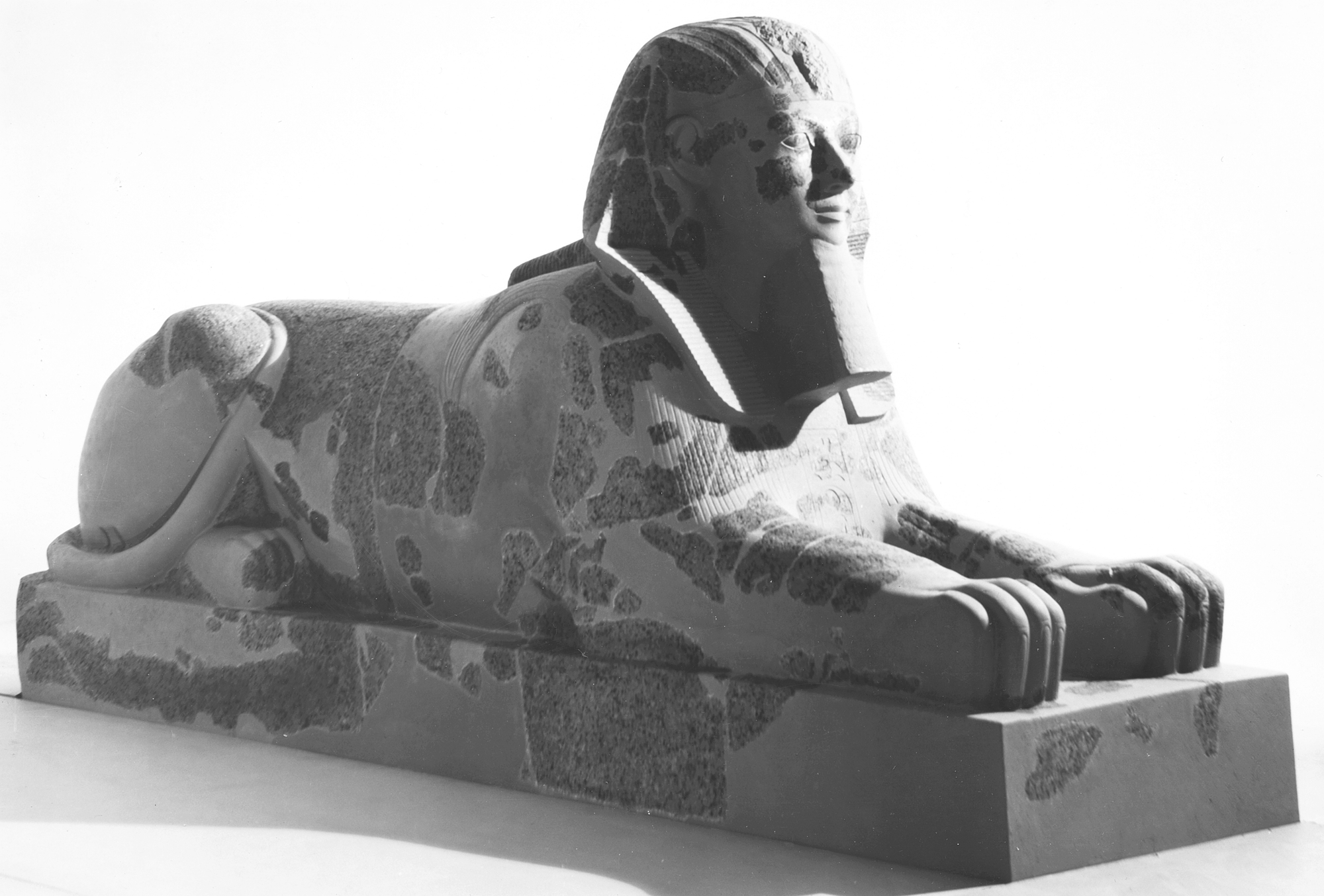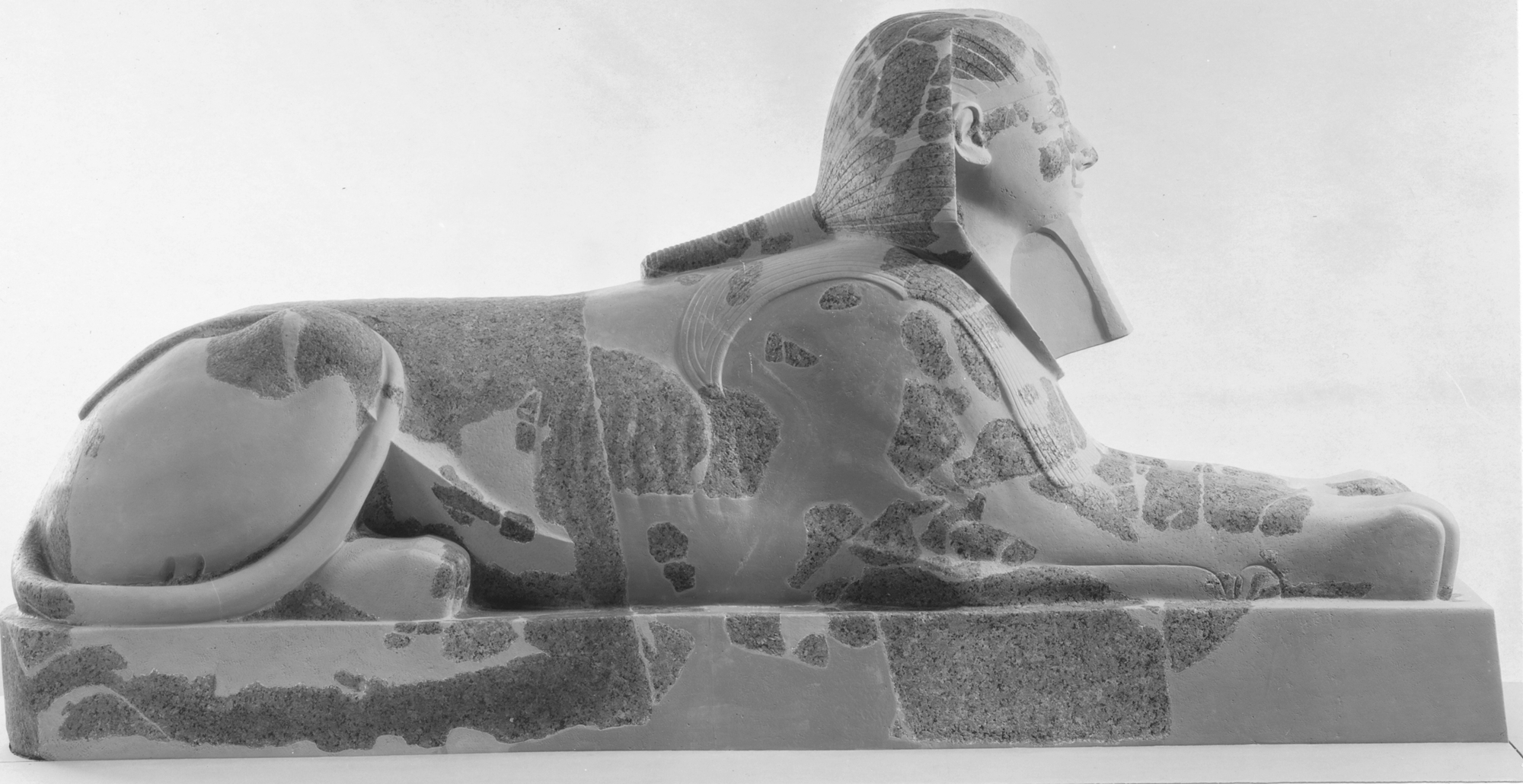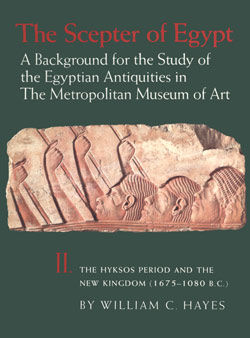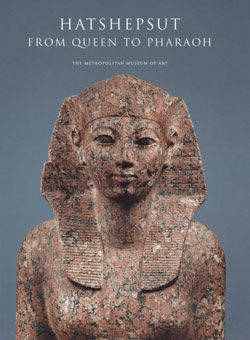Sphinx of Hatshepsut
New Kingdom
This colossal sphinx portrays the female pharaoh Hatshepsut with the body of a lion and a human head wearing a nemes–headcloth and false beard. The sculptor has carefully observed the powerful muscles of the lion as contrasted to the handsome, idealized face of the pharaoh. It was one of at least six granite sphinxes that stood in Hatshepsut's mortuary temple at Deir el-Bahri.
The sphinx has a long history in Egyptian art, the most famous example being the great sphinx at Giza which represents the Fourth Dynasty King Khafre who lived almost a thousand years before Hatshepsut. Sphinxes representing other pharaohs may be seen throughout the Egyptian galleries.
Hatshepsut ruled Egypt, first as regent for and then as senior co-ruler with her nephew/step-son Thutmose III. Most of her statues depict Hatshepsut as an ideal king, a young man in the prime of life, but others depict her as a woman (29.3.3)
#3273. Sphinx of Hatshepsut
Due to rights restrictions, this image cannot be enlarged, viewed at full screen, or downloaded.
This artwork is meant to be viewed from right to left. Scroll left to view more.
